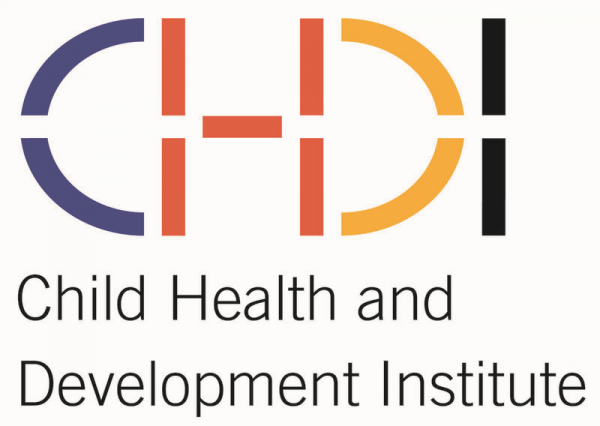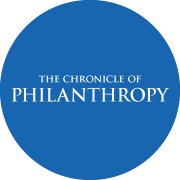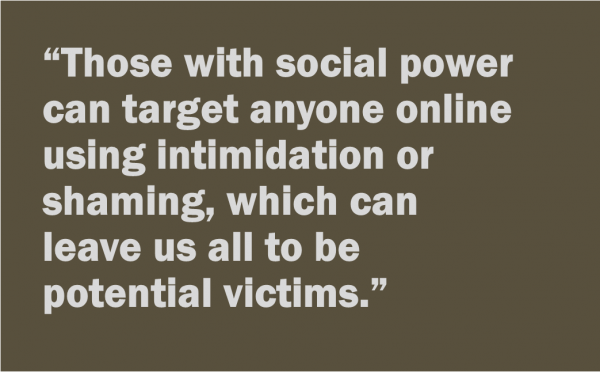Three Foundations Join Forces to Advance Obesity Prevention Efforts in Connecticut
/If an ounce of prevention is truly worth a pound of cure, efforts in Connecticut may hold the key to turning around the nation’s obesity epidemic – especially among children. Connecticut has the 10th lowest adult obesity rate in the nation, according to a study released earlier this year. The state’s adult obesity rate is 26 percent, up from 16.0 percent in 2000 and from 10.4 percent in 1990. That places Connecticut 42nd among the 50 states. The childhood obesity rate is 30 percent for 10-17 year olds, ranking 29th among the states, and 15 percent for 2-4 year olds qualifying for federal nutrition assistance, the 12th highest obesity rate in the country. And that is where the focus of three Connecticut-based foundations will be, as they combine forces to award $194,884 in grants for obesity prevention projects in Connecticut.
The grants are being funded with contributions from the Children's Fund of Connecticut ($139,884), the Connecticut Health Foundation ($30,000), and Newman's Own Foundation ($25,000) and will be administered by CFC's non-profit subsidiary, the Child Health and Development Institute (CHDI).
Funded projects will inform and advance efforts to prevent obesity by improving early feeding practices for diverse socio-economic, racial, and ethnic groups across various early childhood settings.
"Childhood obesity is a wide-spread public health crisis disproportionately impacting racial and ethnic minorities and low-income children. Once obesity sets in it is very difficult to reverse; however, we are still searching for effective ways to prevent it," said Judith Meyers, President and CEO of the Children's Fund of Connecticut.
"New research on infant and toddler feeding practices shows promising results. These grants to improve infant and toddler feeding practices will help us learn more about what works so we can get ahead of the curve."
The competitive application process administered by CHDI yielded the following funded projects:
- Healthy Eating through Group Well Child Care: $59,904, Yale University
Under the direction of Marjorie Rosenthal, MD, MPH, the project examines the impact of embedding a healthy eating curriculum within group well child care, an evidenced-based model of primary care delivery at the Yale New Haven Hospital Primary Care Center. Expected outcomes include less rapid weight gain for infants in the first six months and improvement in mothers' weight over the first year of her child's life.
- Barriers to Participation in CACFP in CT: $64,998, UConn, Rudd Center for Food Policy and Obesity
Tatiana Andreyeva, PhD, Associate Professor at the UConn Rudd Center, will lead a study that documents and addresses barriers to participation in the federal Child and Adult Care Food Program (CACFP) among Connecticut child care centers serving infants and toddlers from low-income families. Connecticut has one of the lowest CACFP participation rates in the nation. The project team will use surveys and stakeholder interviews to assess perceived and actual barriers to CACFP participation and assess outreach and recruitment strategies currently used in Connecticut to increase center enrollment in CACFP.
- Supporting Healthy Eating in Low-Income Toddlers: $64,982, UConn, Allied Health Sciences
Under the direction of Valerie B. Duffy, PhD, RD and Jennifer L. Harris, PhD, MBA, the project will develop and assess a coordinated communications program to deliver consistent messages to low-income parents in East Hartford about best practices for feeding toddlers (1-2 year olds). The messages will be delivered through pediatric clinics, WIC offices, and Family Resource centers in East Hartford. The project will coordinate infant feeding messages and promote responsive feeding across diverse populations and settings.
Funding is also supporting Connecticut Children's Medical Center's Office for Community Child Health to develop and disseminate training for pediatric primary care providers. The training will address key messages to educate parents about best practices in feeding infants and toddlers.
These projects represent the second cycle of funding from CFC in the early childhood obesity prevention arena. Since 2015, CFC has awarded more than $420,000 to advance early childhood obesity prevention.
The work of the first round of grantees helped CFC and CHDI identify public policies that contribute to obesity prevention, test the effectiveness of messages promoting obesity prevention in infants and toddlers, support breast feeding strategies for hospitals, and harness existing medical record data to identify early childhood obesity risks.
The current round of funding was informed by the Robert Wood Johnson Foundation's recently released Feeding Guidelines for Infants and Young Toddlers: A Responsive Parenting Approach, which highlights new areas of research and practice in obesity prevention. The data-rich State of Obesity: Better Policies for a Healthier America, published earlier this year, was a project of the Robert Wood Johnson Foundation and the Trust for America’s Health.



 In Connecticut, individuals earning more than $200,000 gave 66.4 percent of all Connecticut giving, down 1.7 percent from 2012, according to the Chronicle analysis. The portion of all givers in this income bracket in Connecticut down 0.2 percent while the giving per itemizer is down 20.6 percent. In looking at the state’s major metropolitan areas, greater Bridgeport, Hartford, and New Haven, the analysis round that giving rates for taxpayers at four income levels fell below the average for the size group in each of the metropolitan areas.
In Connecticut, individuals earning more than $200,000 gave 66.4 percent of all Connecticut giving, down 1.7 percent from 2012, according to the Chronicle analysis. The portion of all givers in this income bracket in Connecticut down 0.2 percent while the giving per itemizer is down 20.6 percent. In looking at the state’s major metropolitan areas, greater Bridgeport, Hartford, and New Haven, the analysis round that giving rates for taxpayers at four income levels fell below the average for the size group in each of the metropolitan areas.

 “VentureClash again attracted an impressive list of innovative, early-stage companies poised for growth,” said Matt McCooe, CEO of Connecticut Innovations. “The fundamental improvement in this year’s competition is the deep involvement of so many corporate partners. Many of Connecticut’s flagship companies engaged in the process to learn about, meet and help us select the competitors in VentureClash. The Connecticut-based companies are looking to CI to act as a tech scout, and to help identify fantastic talent and innovation from across the globe.”
“VentureClash again attracted an impressive list of innovative, early-stage companies poised for growth,” said Matt McCooe, CEO of Connecticut Innovations. “The fundamental improvement in this year’s competition is the deep involvement of so many corporate partners. Many of Connecticut’s flagship companies engaged in the process to learn about, meet and help us select the competitors in VentureClash. The Connecticut-based companies are looking to CI to act as a tech scout, and to help identify fantastic talent and innovation from across the globe.”



 Among the panelists will be former Senate President Pro Tempore Don Williams, former House Speaker James Amann, former Senate Minority Leader John McKinney, and former House Minority leader Lawrence Cafero. They will be joined by former House member Tim O’Brien, who served on the Government Administration and elections Committee, and Senate Co-Chair of that committee, Sen. Michael McLachlan.
Among the panelists will be former Senate President Pro Tempore Don Williams, former House Speaker James Amann, former Senate Minority Leader John McKinney, and former House Minority leader Lawrence Cafero. They will be joined by former House member Tim O’Brien, who served on the Government Administration and elections Committee, and Senate Co-Chair of that committee, Sen. Michael McLachlan. A week ago, in an op-ed
A week ago, in an op-ed  Flynn added that the law, passed in 2005, “allows candidates and officeholders to look out for the interests of all their constituents rather than being consumed with the needs of their major campaign contributors. It gives talented, motivated citizens who've never had the money or the connections traditionally required for success in politics a chance to seek and win public office with neither big money nor connections. Now, nearly 80 percent of all candidates for legislative and state offices use the program.” Qualifying candidates must raise $5,000 to $250,000 — depending whether they are seeking a statewide office or legislative seat — in $100 increments or less in order to receive a grant of public funds from the CEP.
Flynn added that the law, passed in 2005, “allows candidates and officeholders to look out for the interests of all their constituents rather than being consumed with the needs of their major campaign contributors. It gives talented, motivated citizens who've never had the money or the connections traditionally required for success in politics a chance to seek and win public office with neither big money nor connections. Now, nearly 80 percent of all candidates for legislative and state offices use the program.” Qualifying candidates must raise $5,000 to $250,000 — depending whether they are seeking a statewide office or legislative seat — in $100 increments or less in order to receive a grant of public funds from the CEP.

 onicle used 2015 Internal Revenue Service data on individuals who earn $50,000 or more annually and who itemize charitable deductions on their income-tax returns to create a snapshot of giving in every county and metropolitan area in the country. Only donations of taxpayers who took a deduction are included, the publication noted. The key measure, according to the Chronicle, is the giving ratio: the total of a locality’s charitable contributions as a share of its total adjusted gross income.
onicle used 2015 Internal Revenue Service data on individuals who earn $50,000 or more annually and who itemize charitable deductions on their income-tax returns to create a snapshot of giving in every county and metropolitan area in the country. Only donations of taxpayers who took a deduction are included, the publication noted. The key measure, according to the Chronicle, is the giving ratio: the total of a locality’s charitable contributions as a share of its total adjusted gross income.
 t Hartford also looks forward to entering.
t Hartford also looks forward to entering.
 District teams identify one exemplary teacher from within their teaching populations. Each district nominee completes the state application in the ensuing months and submits it to the State Department of Education. Applications are distributed to members of a reading committee, and the results are tabulated to identify approximately fifteen semi-finalists.
District teams identify one exemplary teacher from within their teaching populations. Each district nominee completes the state application in the ensuing months and submits it to the State Department of Education. Applications are distributed to members of a reading committee, and the results are tabulated to identify approximately fifteen semi-finalists.



 The U.S. Census Bureau’s
The U.S. Census Bureau’s  ensus officials are necessary to obtain more accurate population and demographic counts. If those visits are reduced in order to cut costs, the accuracy of the census itself is likely to diminish, observers say. Connecticut, which does not have independent counts of its entire population, depends heavily on data derived from the U.S. Census for a host of policy and funding decisions.
ensus officials are necessary to obtain more accurate population and demographic counts. If those visits are reduced in order to cut costs, the accuracy of the census itself is likely to diminish, observers say. Connecticut, which does not have independent counts of its entire population, depends heavily on data derived from the U.S. Census for a host of policy and funding decisions.
 Yes, this day it was Delta, and they have not made too many friends lately. But tomorrow it could be a smaller company. Maybe a local place that has been a pillar to your community. Do you trust Coulter, or any other person with social power, with the ability to tarnish a business’ reputation indefinitely?
Yes, this day it was Delta, and they have not made too many friends lately. But tomorrow it could be a smaller company. Maybe a local place that has been a pillar to your community. Do you trust Coulter, or any other person with social power, with the ability to tarnish a business’ reputation indefinitely?



























